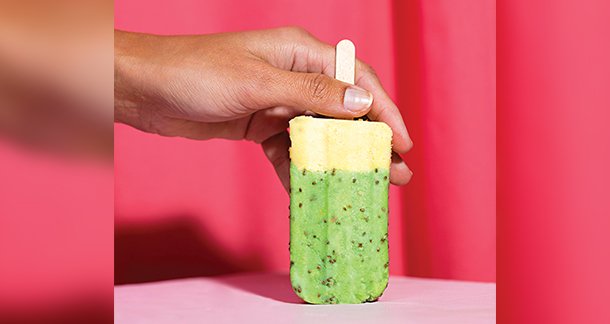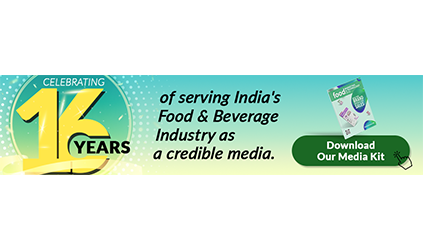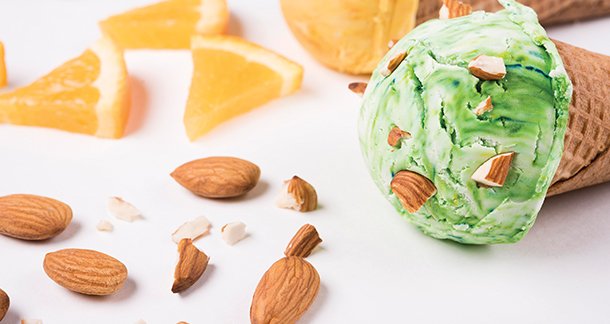By Muskan*
In recent years, the food industry has witnessed a significant shift towards healthier options, with consumers increasingly seeking out products that align with their nutritional goals. Among the various trends, the rise in demand for low-calorie, high-protein ice creams has been particularly notable. This shift is not just a fleeting trend but a reflection of a broader movement towards healthier eating habits, driven by an informed and health- conscious public.
The Evolution of Ice Cream: From Indulgence to Nutrition
Traditionally, ice cream has been synonymous with indulgence—a rich, creamy treat often associated with high sugar and fat content. However, with growing awareness of the negative health impacts of excessive sugar and calorie intake, consumers have become more selective about their dessert choices. The modern consumer is no longer just looking for a tasty treat; they are also considering the nutritional value of their food. This change in mindset has paved the way for the emergence of low-calorie, high-protein ice creams.
Brands like Halo Top, Enlightened, and Arctic Zero have capitalized on this trend, offering products that promise the same indulgent experience of traditional ice cream but with significantly fewer calories and a higher protein content. These products are marketed as guilt-free alternatives, allowing consumers to enjoy their favorite desserts without compromising their health goals.
The Science Behind Low-Calorie, High-Protein Ice Creams
The development of low-calorie, high-protein ice creams is a triumph of food science. Manufacturers use a combination of innovative ingredients and techniques to replicate the creamy texture and rich flavor of traditional ice cream while reducing the calorie content. Key ingredients often include sugar substitutes like erythritol or stevia, which provide sweetness without the added calories of regular sugar. Additionally, protein sources such as whey protein concentrate or milk protein isolate are incorporated to boost the protein content, making these ice creams not just a treat but a functional food.
The texture and mouthfeel of these ice creams are carefully engineered to ensure they closely mimic the experience of eating full-fat, high-sugar ice cream. This is achieved through the use of emulsifiers and stabilizers, which help maintain the creamy consistency and prevent ice crystallization, even with reduced fat content. The result is a product that satisfies both the taste buds and the nutritional needs of the consumer.

Market Trends and Consumer Preferences
The growing popularity of low-calorie, high-protein ice creams is reflected in the market trends. According to market research, the global ice cream market is expected to reach USD 97.85 billion by 2027, with the low-calorie segment showing particularly strong growth. This surge is driven by a combination of factors, including the increasing prevalence of health-onscious consumers, the rise of fitness and wellness cultures, and the expanding range of flavors and products available in this category.
Consumers are drawn to these products for various reasons. For some, it’s the ability to enjoy a sweet treat without the associated guilt of consuming high-calorie, high-sugar desserts. For others, particularly those focused on fitness and muscle-building, the high protein content is a major selling point. This demographic includes everyone from body builders and athletes to those simply looking to maintain a healthy weight or lifestyle.
Moreover, the demand for transparency in food labeling has also contributed to the success of these products. Consumers today are more informed and discerning, often reading labels to check for calorie counts, protein content, and the presence of artificial ingredients. Brands that offer clear, honest labeling and align with the values of health- conscious consumers are more likely to succeed in this competitive market.

Challenges and Future Outlook
Despite the growing demand, the market for low-calorie, high-protein ice creams is not without its challenges. One of the primary issues is the price point. These products are often more expensive than traditional ice creams, which can be a barrier for some consumers. Additionally, while the use of sugar substitutes and artificial sweeteners helps reduce calorie content, there is ongoing debate about the long-term health effects of these ingredients.
Another challenge is maintaining the delicate balance between taste and nutrition. While consumers want healthier options, they are not willing to compromise on taste. Ice cream is, after all, a treat, and if the taste or texture is significantly different from what they are accustomed to, consumers may be reluctant to make the switch.
Looking ahead, the future of low-calorie, high-protein ice creams appears promising. Continued advancements in food technology will likely lead to even better products, with improved taste, texture, and nutritional profiles. As consumer demand for healthier, more functional foods continues to grow, it is expected that more players will enter the market, further driving innovation and competition.
Conclusion
The rise of low-calorie, high-protein ice creams marks a significant shift in consumer preferences, reflecting a broader trend towards healthier eating habits. As more people prioritize their health without wanting to sacrifice the pleasure of indulgence, the demand for these innovative ice cream products is expected to continue growing. With ongoing advancements in food science and a clear consumer appetite for healthier options, low- calorie, high-protein ice creams are set to become a staple in the modern diet. This new era of indulgence, where taste meets nutrition, is not just a passing trend but a lasting change in the way we enjoy our favorite foods.
About the author:
*Muskan, MSc. Dietetics and Nutrition



